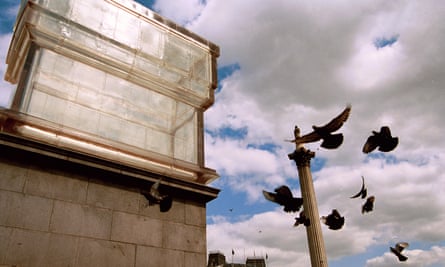Property companies have always liked to put the best possible gloss on their proposals – views taken from angles that minimise their bulk, atmospheric effects in their images that make many tonnes of construction materials melt into the air. A virtuoso example was recently presented at Liverpool Street station by Sellar Property Group, which brought us the Shard, in a brief “public consultation” about its grand plans for the venerable terminus.
The proposal, designed by the architects Herzog and de Meuron, is to put a colossal chunk of real estate above the station concourse and the neighbouring listed Great Eastern hotel, replacing the former’s Victorian-style vault and blocking out the daylight that percolates through it. But you’d be hard pressed to comprehend its impact from the computer-generated images that were on show or the accompanying video and virtual reality walk-through. There was a model that didn’t include several storeys of the new block. In the visuals a dazzling luminosity suffused the no-longer-daylit concourse. The new work was represented as a white substance impervious to weather and dirt. Trees were shown flourishing in overshadowed locations where they would struggle to grow.
Meanwhile, visitors’ attention was drawn to the improvements to passengers’ experiences that Sellar says its project will bring and they were asked if they would like the station to be better than it is now. But, given the implausibly ethereal version of the project on display, this exercise has limited value in establishing its merits and flaws or public opinions on them. It’s not consultation, it’s PR.
Trust in truth

The National Trust has been under fire again, this time for saying, in a film made with the University of Leicester, that Henry VIII was disabled for the last 11 of his 55 years. This, according to the Daily Mail, is a “woke rebranding” of a king it says was better known for his “legendary” vigour. Someone called Chris McGovern, of the rightwing pressure group the Campaign for Real Education, obligingly piped up on the subject, saying it is “distorting history” to emphasise this aspect of his life. The Mail, for good measure, repeated an old lie that the trust banned the use of the word Easter in relation to egg hunts.
But… it’s a historical fact that Henry VIII was disabled, so it’s hard to see how “real education” is served by obscuring it. It’s also helpful to the understanding of disability to point out that, as for most with impaired mobility, his wasn’t a lifelong condition. The Mail’s attack represents a new level of desperation, the culture wars equivalent of the Russian army getting 1950s tanks out of storage. Is this the best argument the Mail and bashers of the National Trust have got? Is it woke to tell the truth?
Breathing space

Around the turn of the millennium, much energy was expended debating the proper use of the empty fourth plinth in Trafalgar Square. Should, for example, the Queen Mother be honoured there, perhaps astride another well-loved national treasure, the three-times Grand National winner Red Rum? The Fourth Plinth Commission, as it is now known, decided there should be a changing programme of temporary installations. The idea worked: instead of the profound indifference that usually settles on permanent sculptures after they are erected, each new work generated its own buzz. Some were memorable, some engaging, some silly. Now Rachel Whiteread, author of one of the stronger plinth sculptures, has argued that this 24-year-old diversion has run its course. She’s right: a period of emptiness, which was never actually much of a problem, would suit the plinth well.

